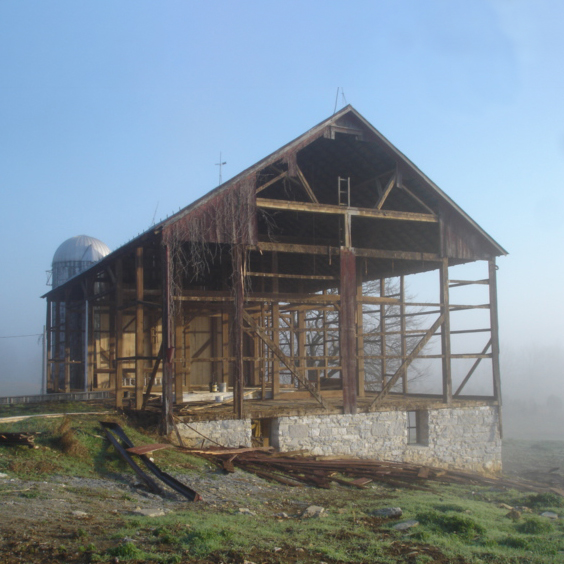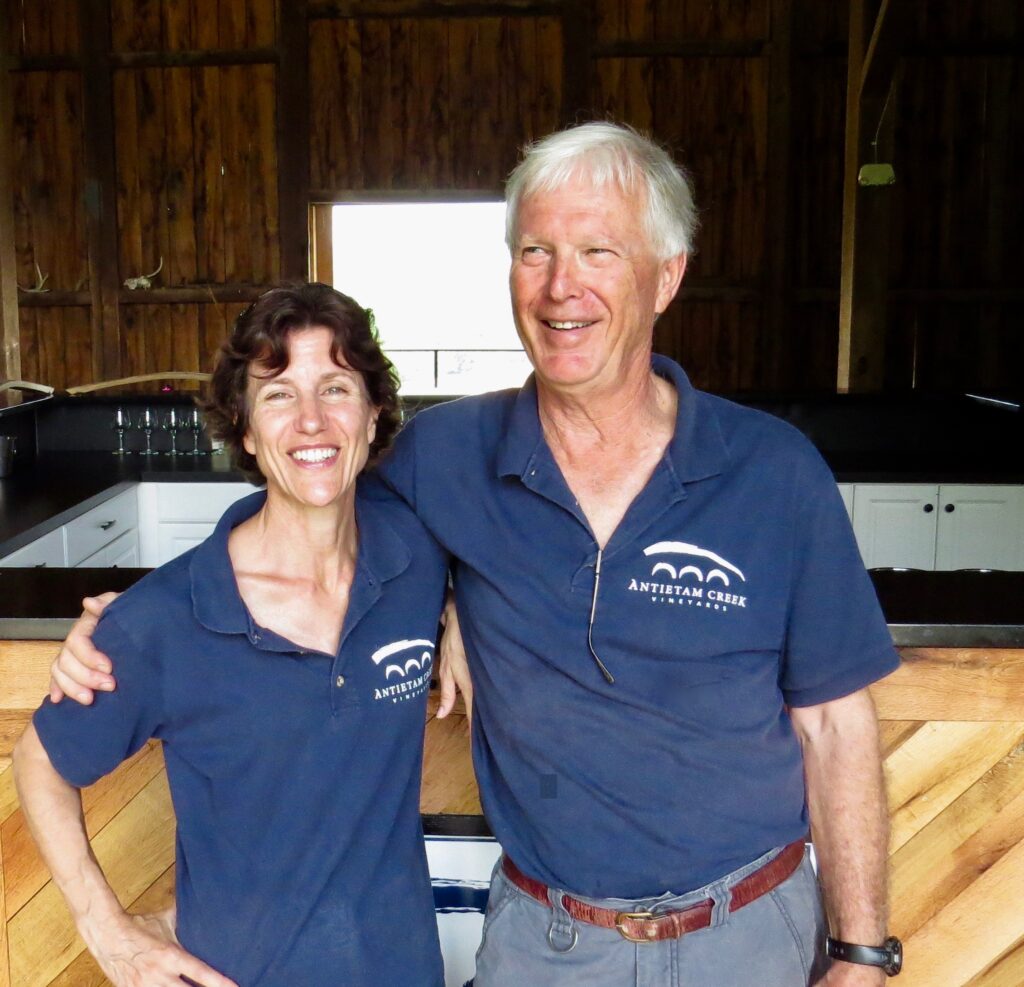
Antietam Creek Vineyards began as an abandoned 55-acre dairy farm adjacent to the Antietam National Battlefield. After buying the land in 2010, our owners spent months carefully cultivating the land, testing soil microclimates, and building a deer fence to keep curious antlered friends at bay. In 2011, we began planting the first of our 4.5 acres currently under cultivation.
Our area is known for its karst, or limestone, formations. If you talk to local farmers whose families have tilled the soils for generations, they will tell you, “It ain’t Washington County if you don’t hit rock.” In preparing for our plantings, we removed some rocks the size of refrigerators and left others that were simply too huge to move. That same limestone is a tremendous asset for winemaking — it keeps our soils at a perfect 7.0 pH, or neutral acidity. In doing so, it imparts “terroir,” or place-specific taste elements, to our wine.
In 2015, after many years of hard work, and with the vines reaching full production capacity, we sought out skilled craftsmen from the local area and retrofitted our hundred-year-old barn into our tasting room. We wanted to maintain the rough beauty of its soaring heights and hand-hewn chestnut beams for visitors, while introducing the most modern and high-quality equipment possible into the cool limestone cellar where we process and age the wines. Late in 2016, we began selling wine out of a tent on our property, and the tasting room itself was completed in 2018.

Today, Antietam Creek Vineyards boasts a full estate wine production facility and tasting room — we grow all our own grapes in our on-site vineyard, and produce and bottle all our wines in-house, in our wine cellar beneath the tasting room. We are proud to be a part of the up-and-coming Maryland viticultural region, and to share the fruits of our labors with you.

Our owners
Antietam Creek Vineyards was borne out of the efforts of George Warmenhoven and Joan Larrea, co-owners and co-founders. George was born in the Netherlands and lived in then-Dutch New Guinea (now part of Indonesia) and Australia before settling in the U.S. Once here, he pursued a healthcare and IT career. Joan grew up partly in Asia as well, and has traveled extensively around the world as a finance professional. She continues to work in development finance during the week while assisting George on the weekends in the tasting room and vineyard.
George is the driving force behind Antietam Creek Vineyards. He has long had a dream of putting his biology degree and viticultural interests into starting a winery. After retiring, and in the midst of a global financial crisis, he decided to go for it, with Joan’s enthusiastic support. Both Joan and George are still deeply connected to winery operations — if you stop in to visit, you may find one or both of them out working in the vineyard, tending to the wine production, or up in the tasting room itself.
Our land
Antietam Creek Vineyards borders the southern portion of the Antietam National Battlefield Park, which was established to memorialize the September 17, 1862 Battle of Antietam, the bloodiest battle in U.S. history. Most of the fighting of that time unfolded on private farms like ours, though our farm itself saw no fighting during that battle. Some of these farms — including ours! — have remained in private hands since that time, forming a periphery around the Antietam National Battlefield.

We have great respect for the history of the place where we cultivate our grapes and produce our wines. You’ll notice that we do not use any labels that refer directly to the Battle of Antietam, in deference to the memory of those who fought. We chose instead to evoke the gentle arch of the Burnside Bridge, which was the scene of some of the fighting, but which also — long before and well after the battle — was one of several stone bridges that crossed the Antietam Creek to connect the area to commercial centers.

